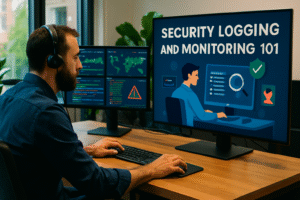
How to start a career in cybersecurity
Cybersecurity is no longer an obscure field reserved for secretive experts or math prodigies. Today, it is one of the most dynamic, accessible, and meaningful career paths in technology. Whether you’re drawn by the thrill of solving puzzles, the satisfaction of defending people and organizations, or the promise of a rewarding career, cybersecurity welcomes curious minds from all walks of life—including those who are neurodivergent or from underrepresented backgrounds.
Understanding the Foundations: What Is Cybersecurity?
At its core, cybersecurity is about protecting digital systems, data, and networks from unauthorized access, attacks, and damage. This protection spans everything from laptops and mobile phones to massive cloud infrastructures and industrial control systems. The field is broad, evolving, and deeply intertwined with every aspect of modern life.
“Cybersecurity is not only about technology. It’s about people, processes, and culture.”
Cybersecurity professionals often work behind the scenes, ensuring the safety of our emails, bank transfers, online shopping, and even the electric grid. Their impact is invisible but profound.
Who Can Start a Career in Cybersecurity?
There is a persistent myth that cybersecurity is only for those with a traditional computer science education or years of technical experience. In reality, the field thrives on diverse perspectives. People with backgrounds in psychology, law, linguistics, teaching, and art have all found their place in cybersecurity teams.
Neurodivergent individuals often excel in cybersecurity roles requiring pattern recognition, attention to detail, and innovative problem-solving. Likewise, women and other underrepresented groups are increasingly making their mark and bringing essential new voices to the field.
If you are curious, persistent, and willing to learn, you already have the seeds of a cybersecurity professional.
Mapping the Cybersecurity Landscape
Cybersecurity is not a single job or skillset, but a vast domain with many subfields. Here are some of the main areas:
- Security Operations: Monitoring networks and systems for threats and responding to incidents.
- Penetration Testing: Ethically hacking systems to find vulnerabilities before attackers do.
- Governance, Risk, and Compliance (GRC): Ensuring organizations follow laws, regulations, and best practices.
- Digital Forensics: Investigating cybercrimes and gathering evidence.
- Application Security: Building and testing secure software.
- Cloud Security: Protecting data and resources in cloud environments.
Each area requires a different mix of technical, analytical, and interpersonal skills. As you explore, you might find yourself gravitating toward a particular specialty—or enjoying the variety that comes from working across several.
Step 1: Building Your Knowledge Base
Before you can break into cybersecurity, it’s essential to understand the basics of how computers and networks work. This doesn’t mean you need to be a programming wizard from day one, but a solid foundation will make advanced concepts much more approachable.
Start by learning:
- Basic computer and network concepts: Understand what operating systems, IP addresses, routers, and firewalls do.
- Common threats: Learn about phishing, malware, ransomware, and social engineering.
- Security principles: Confidentiality, integrity, and availability—the pillars of information security.
Resources abound online. Free courses from platforms like Cybrary, Coursera, and edX can start you on your journey. Many universities now offer introductory cybersecurity modules that are welcoming to beginners and often tailored to diverse learning styles.
Step 2: Gaining Practical Skills
Cybersecurity is a hands-on field. Theory is important, but nothing beats practical experience. You can start practicing right away, even without a formal job or expensive equipment.
- Set up your own lab: Use free tools and virtual machines to simulate attacks and defenses. Platforms like TryHackMe and Hack The Box offer guided challenges for all levels.
- Participate in Capture the Flag (CTF) competitions: These gamified events can sharpen your skills and introduce you to real-world scenarios.
- Contribute to open-source security projects: Even a small contribution—writing documentation, testing software, or fixing bugs—counts as practical experience.
- Volunteer: Local non-profits, schools, or small businesses often appreciate cybersecurity help. These experiences build your confidence and resume.
Step 3: Choosing a Learning Path
There is no one “right” way into cybersecurity. Some people come through traditional four-year degrees in computer science or information security. Others transition from adjacent careers—IT support, software development, even psychology or law.
Consider your strengths and learning preferences. If you enjoy structured learning, certifications like CompTIA Security+, Certified Ethical Hacker (CEH), or Certified Information Systems Security Professional (CISSP) (for advanced roles) can provide a clear framework. Many employers recognize these credentials, and the process of studying for them can fill in knowledge gaps.
“Certifications are a key that can open doors, but curiosity and persistence are what keep them open.”
If you learn better by doing, hands-on projects, internships, or participating in online communities may suit you better. There is immense value in both approaches; the key is to keep moving forward.
Building Your Network and Personal Brand
Cybersecurity is as much about relationships as it is about technology. The community is famously welcoming to newcomers—provided you show willingness to learn and respect for others.
- Join online forums and groups: Communities like Reddit’s r/cybersecurity, Women in Cybersecurity (WiCyS), and Neurodiversity in Tech are supportive spaces to ask questions and share experiences.
- Attend meetups and conferences: Many events have beginner tracks and scholarships for students or underrepresented groups.
- Find a mentor: A mentor can provide guidance, encouragement, and help you navigate challenges unique to your background or learning style.
Document your journey. Create a blog, share your learning projects on GitHub, or post reflections on LinkedIn. This not only helps others but demonstrates your commitment and growth to potential employers.
Embracing Diversity and Neurodiversity in Cybersecurity
Cybersecurity desperately needs perspectives that reflect the diversity of the world it protects. Women, neurodivergent individuals, and those from historically excluded groups are uniquely positioned to spot threats others might miss and to design better, more inclusive solutions.
Many organizations now offer scholarships, networking groups, and tailored resources to support these communities. If you are navigating the field as a neurodivergent learner, look for training programs with hands-on, flexible, or visually oriented materials. The cybersecurity community is increasingly aware of the value of different cognitive styles and is adapting accordingly.
“Different minds approach problems differently—this is cybersecurity’s secret weapon.”
The First Job: How to Break In
Landing your first cybersecurity role can feel daunting, but remember: every expert was once a beginner. Here are practical steps to help you transition from learning to earning:
- Look for entry-level roles: Titles like “Security Analyst,” “SOC Analyst,” “IT Support with Security Focus,” or “Junior Penetration Tester” are great starting points.
- Highlight transferable skills: Project management, communication, troubleshooting, and even customer service are invaluable in security roles.
- Tailor your resume: Emphasize hands-on projects, labs, certifications, and community contributions—even if they weren’t paid positions.
- Prepare for interviews: Practice explaining security concepts clearly and confidently. Be ready to discuss a project or challenge you solved.
- Stay open to contract or part-time work: These roles can lead to permanent positions and help you build your professional network.
Don’t be discouraged by job postings that list years of experience or a daunting list of requirements. Apply anyway. Many employers value passion, potential, and willingness to learn over a perfect resume.
Continuous Learning: Staying Current in a Fast-Moving Field
Cybersecurity is relentlessly dynamic. New threats, tools, and regulations appear constantly. A growth mindset and commitment to lifelong learning are your greatest assets.
- Follow trusted sources: Blogs, podcasts, newsletters, and official security advisories help you keep up to date.
- Participate in ongoing training: Many employers support continued education through courses and certifications.
- Teach others: Sharing knowledge deepens your own understanding and gives back to the community.
“In cybersecurity, every day brings a new puzzle to solve. That is its greatest challenge—and its greatest joy.”
Navigating Challenges and Celebrating Successes
Like any field, cybersecurity has its challenges. Imposter syndrome, bias, or the sheer breadth of information can be intimidating. But remember, no one knows everything. The most respected professionals are those who ask questions, admit when they don’t know, and help others along the way.
Celebrate your progress, however small. The first time you configure a firewall, crack a CTF challenge, or help a friend avoid a phishing scam, you are already making a difference.
Final Thoughts: Your Journey Starts Here
The world needs defenders as much as it needs innovators. Cybersecurity offers a rare blend of intellectual challenge, societal impact, and creative satisfaction. Whether you’re a student, a career-changer, or someone who learns and thinks differently, there is a place for you in this exciting field.
Start where you are. Take one step at a time. Connect with others who share your curiosity and values. The door to cybersecurity is wide open.
You belong here.


